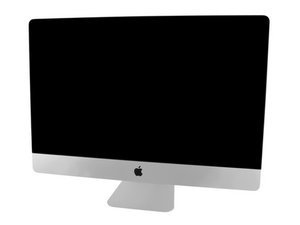Sorry the world is still round ;-}
Haven't done the new 2017 model, but I can tell you the older 5k still needed it. You really don't want to go cheap here after spending a ton on a new system.
Make sure you review the IFIXIT guide here: iMac Intel 27" Retina 5K Display Replacement on how to remove the display and make sure you use the correct tools! Its very easy to damage display. Here is a good vid by OWC on their teardown: Unboxing and Teardown of the 2017 27" iMac retina 5k
Don't forget you'll void your AppleCare warranty!!
To clarify whats going on here:
Apple uses the internal thermal sensor inside the HDD to manage the systems fan (one of the thermal sensors). Apple contracted with the HD vendors to use custom Apple firmware on the drives so the SATA cable would carry the drives thermal sensor output.
So if you swap out the HDD with a different aftermarket HDD it won't communicate with the system's SMC which controls the fan and interfaces with other system thermal sensors.
As for SSD's they don't get as hot and most don't have an internal thermal sensor, and again the drives don't have the needed firmware to talk to SMC.
This is why you need the OWC sensor. While many people have tried using software to over-ride SMC I don't recommend them. Over time we have learned they are not as effective as the hardware option and many people don't tune it correctly so they damage their systems logic board (which is quite expensive!)
Why do people think they don't need it?
Ah! They put the system back together turn it on and it appears to be running just fine! Well if they ran it a while and monitored the built-in sensors with a good monitoring app like: TG Pro they will see the systems temp ramp up and as the processing load increases the fan will start to go into overdrive. Once it does it tends to stay there (if you disconnect power SMC will reset).
War diese Antwort hilfreich?
Bewertet
Rückgängig machen
Bewertung
4
Abbrechen
Schau durch den Thread, bis du den richtigen Platz für diesen Kommentar gefunden hast. Klicke dann auf "Den Kommentar diesem Post zuordnen", um ihn zu verschieben.

 1
1  1
1 
 970
970